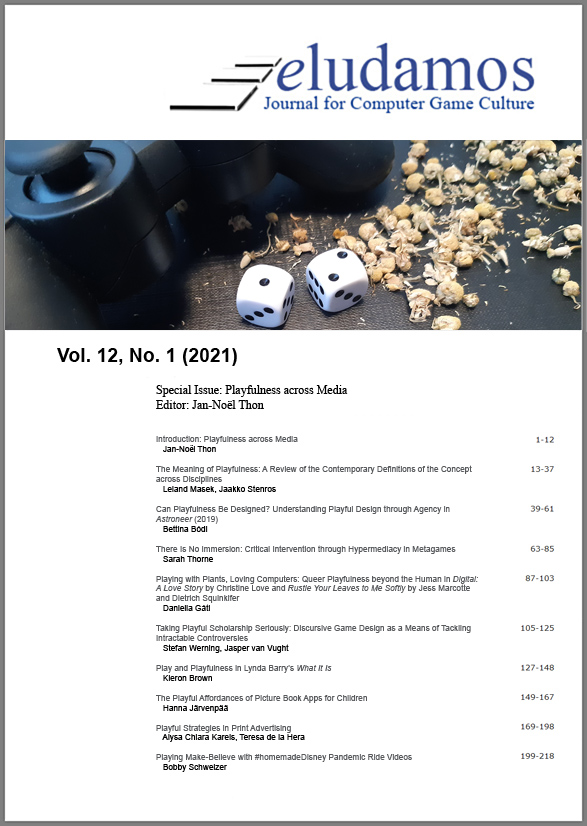Play and Playfulness in Lynda Barry’s What It Is
DOI:
https://doi.org/10.7557/23.6366Keywords:
Lynda Barry, constructedness, immediacy, play, playfulnessAbstract
This article discusses play and playfulness in Lynda Barry’s autobiographical comics/instructional work What It Is (2008). The term ‘playfulness’ is commonly used in two primary but distinct ways, namely in a phenomenological sense concerning a free attitude accompanying a given play activity, and referring to a frame-breaking form of disruption. I refer to the former as play/playing, and reserve the term ‘playfulness’ for the latter, while also suggesting that playfulness implies a form of disruptive attitude or intent. Playing is a central concept in Barry’s work, one on which the author draws in terms of formulating the creative process. Barry’s insistence on the phenomenological or experiential aspects of playing both reinforces and is reinforced by the stylistic aspects of What It Is. Thus, assertions of playfulness based on elements of Barry’s work that subvert convention, often via a form of ambiguity, are consistently countered by Barry’s emphasis on process. It is therefore argued that, if What It Is displays a form of playfulness, it is primarily in terms of the way that it occupies the border between immediacy and authenticity, on the one hand, and constructedness, on the other. The article first establishes the approach to playing adopted by Barry throughout What It Is, based on the work of D. W. Winnicott, and links it to other conceptualizations of play/playing, before drawing a distinction between playing and playfulness. Following this, it examines how Barry’s delineation of the creative process as play, as well as the author’s approach to style, achieves a perceived form of immediacy and authenticity. After this, following consideration of the playfulness of Barry’s collage pages, the article considers how What It Is occupies the border between immediacy and constructedness.
Publication Facts
Reviewer profiles N/A
Author statements
Indexed in
-
—
- Academic society
- N/A
- Publisher
- Septentrio Academic Publishing








